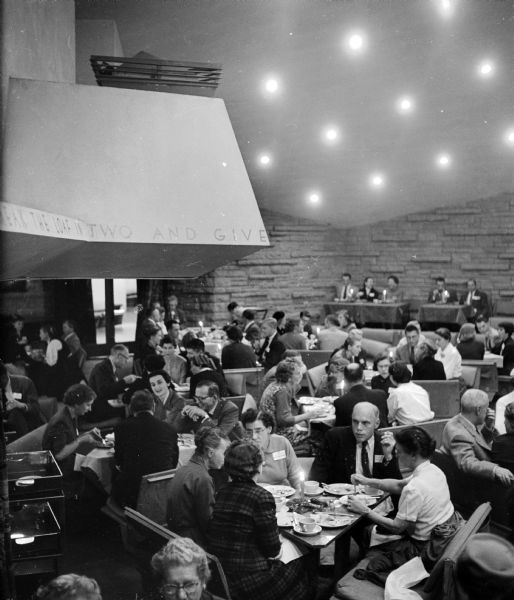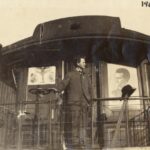For over a century, the First Unitarian Society of Madison has been a center for like-minded individuals to share ideas and connect. The Society’s Meeting House was designed by Frank Lloyd Wright and stands as a one of his most representative works, its proud prow like a ship on the sea of UW-Madison’s west campus. Wright also designed furnishings customized for the building’s architecture and use. One of these items is a pew/bench in the permanent collection of the Chazen Museum of Art, located in Madison, Wisconsin. This bench documents the history of the First Unitarian Meeting House and showcases Frank Lloyd Wright’s intense attention to detail as a designer.
Measuring 27 1/2 x 41 3/4 x 21 in, the bench is large enough to accommodate multiple people at once. Wright’s bench is an original furnishing from the Meeting House built in 1951. These benches came in four sizes: Regular, Low, Single and Extra Long. This specific bench is of the “Regular” variety and it featured a pocket for books across the back. [1] Later, it was redesigned with a back that moves on a string hinge, making it easy to fold and store when not in use. The bench is made of plywood and has fabric cushions, making it a portable piece that users can arrange in a variety of configurations.




Wright hoped that the design of these benches would directly reflect the goals of the Meeting House. The flexibility of their configuration meant that groups of all sizes could meet. This bench, along with many others just like it, formed rows for large gatherings or clusters for dinners, games, or other small groups. The society also used the benches in tandem with triangular tables that were designed to be used on their own or pushed together to make a larger rectangular table. The users of the meeting house did not have to work around the space, rather they could make the space work for them. The lightweight design made the benches easy to move and the folding feature allowed for them to be stored discretely when not in use. For examples, a wedding party could arrange the benches in rows for the ceremony, clustered around tables for a reception dinner, and folded and pushed to the sides of the room for dancing.
Written by Anna Michalski, August 2021.

Chazen Museum of Art, University of Wisconsin-Madison
This object is part of the collection of the Chazen Museum of Art at the University of Wisconsin-Madison. Museum Object #1981.51
RELATED STORIES

Unitarianism and the Madison Meeting House



